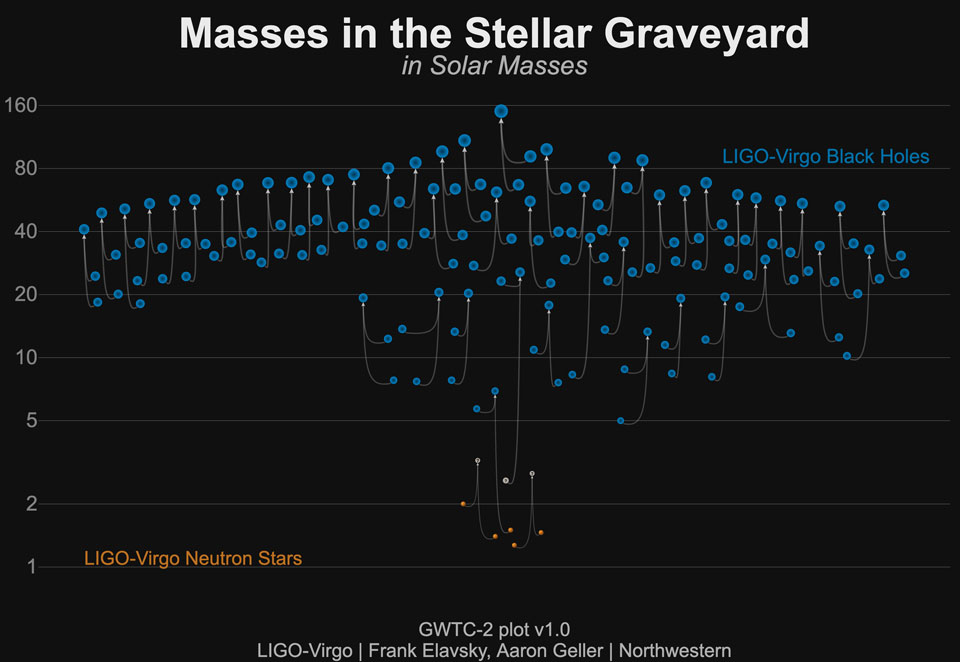2020年11月4日
Fifty Gravitational Wave Events Illustrated
Image Credit: LIGO Virgo Collaborations, Frank Elavsky, Aaron Geller, Northwestern U.
Explanation: Over fifty gravitational wave events have now been detected. These events mark the distant, violent collisions of two black holes, a black hole and a neutron star, or two neutron stars. Most of the 50 events were detected in 2019 by the LIGO gravitational wave detectors in the USA and the VIRGO detector in Europe. In the featured illustration summarizing the masses of the first 50 events, blue dots indicate higher-mass black holes while orange dots denote lower-mass neutron stars. Astrophysicists are currently uncertain, though, about the nature of events marked in white involving masses that appear to be in the middle — between two and five solar masses. The night sky in optical light is dominated by nearby and bright planets and stars that have been known since the dawn of humanity. In contrast, the sky in gravitational waves is dominated by distant and dark black holes that have only been known about for less than five years. This contrast is enlightening — understanding the gravitational wave sky is already reshaping humanity’s knowledge not only of star birth and death across the universe, but properties of the universe itself.
Tomorrow’s picture: open space
50例引力波事件的集结图
影像提供: LIGO Virgo Collaborations, Frank Elavsky, Aaron Geller, Northwestern U.
说明: 截自目前为止,人类侦测到的引力波事件已超过50例。这些事件源自宇宙深处,2颗黑洞、黑洞与中子星、或2颗中子星的剧烈碰撞。这50例大多是在2019年,由位在美国的LIGO引力波侦测器和欧洲的VIRGO侦测器所记录。这张主题图示集结了头50例事件参与的天体之质量,蓝点标示质量较高的黑洞,橙点为质量较低的中子星。不过,天文物理学家目前尚无法确定,以白点标示,质量居中,介于2倍到5倍太阳质量的事件之本质。影像里的可见光夜空,则有自人类肇始之后,即已熟知的邻近恒星或亮星。对比之下,在引力波段的天空图里,主要波源都是遥远黝黑的黑洞,而且是最近5年才获得确认的天体。这种对比深具启发性,因为在引力波段观测天空,除了重塑人类对宇宙各处的恒星生与死之认知,兼且披露了宇宙的性质。
明日的图片: open space







